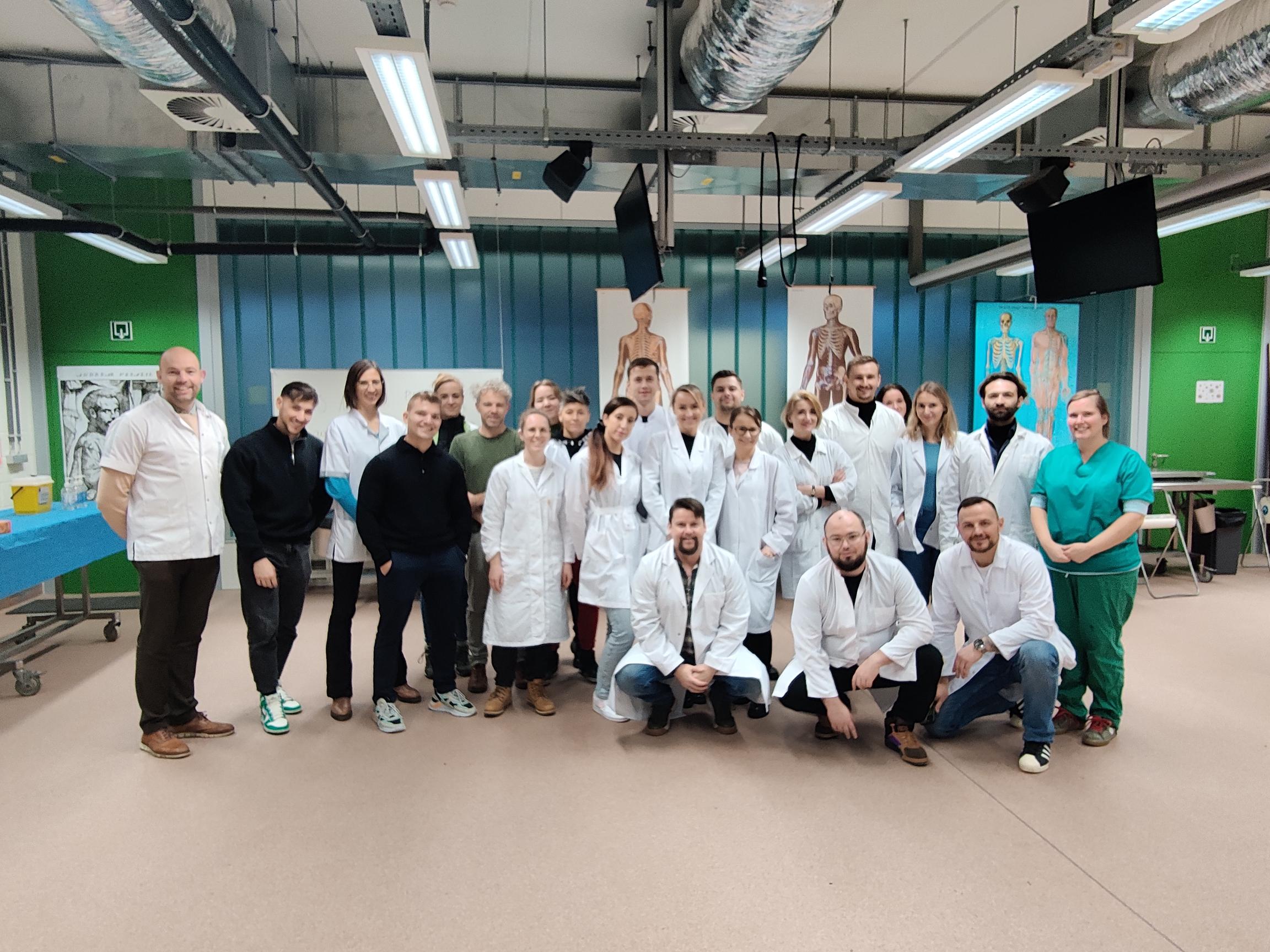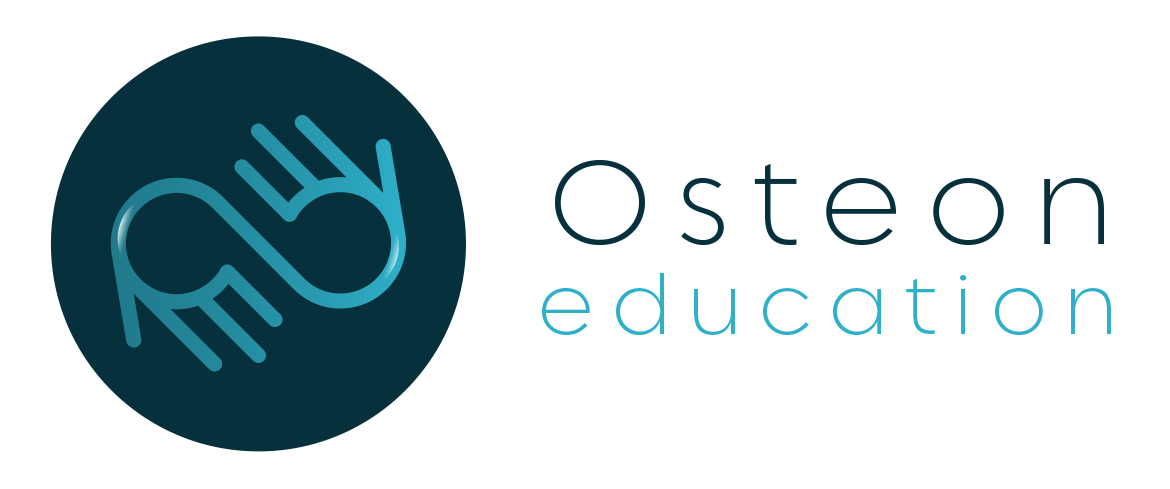
Osteon has a rich tradition of organizing dissection classes in collaboration with the University of Antwerp, covering various topics such as the primo vascular system, visceral, cranial, the orthosympathic system, lymphatics, and discoradicular conflicts...
This longstanding collaboration has led to osteopathic dissection courses, focusing on structures crucial for developing osteopathic thinking and insights. Didactic specimens are prepared from an osteopathic perspective to ensure an optimal learning experience, with an emphasis on preserving fasciae as intact as possible. The prosector begins each course with an explanation from a classical medical anatomical viewpoint, providing an optimal orientation and refresher of basic anatomy.
From this foundation, knowledge and insights are elevated to a high standard of osteopathy: fasciae are viewed in continuity, muscles are connected in stirrup systems, foramina are linked with impingements, and venous and (g)lymphatic systems are illustrated. Explore the intricate network of nerves, blood vessels, and primovascular system within the peritoneum by holding it to the light. Experience the therapeutic effects of stretching the radix mesentericus, simulating a clinic-like scenario, and witness the remarkable outcomes firsthand. Leave with a huge smile after witnessing the fascinating phenomenon of sutural opening in a skull filled with beans upon pouring water.
Test and improve your cranial anatomy knowledge by linking the content of each foramen or fissure with its clinical relevance. For example, understanding the contents of the foramen jugulare is crucial for understanding conditions linked with the function of these structures. Apply the same procedure on an animal skull and witness the osteopathic tenet of structure being related to function. By observing the differences and similarities in the cranial anatomy between humans and animals, you can gain a deeper understanding of how structure influences function in osteopathic practice. Leave with a heightened appreciation for the intricate relationship between cranial anatomy and clinical relevance, solidifying your grasp on osteopathic principles and practices.
Take your time and explore. Squeeze the gallbladder of a wild boar and witness the green fluids pass trought the fascial vessels into the sfincter of Oddi. Palpate this sfincter during the process and gain insights.
At Osteon, there is animal dissection, and at the University of Antwerp, there is human dissection, both in accordance with Belgian regulations.
Anatomy is brought to life, emphasizing the interconnectedness of all elements—the body as a unit, one of the four tenets of osteopathy. Additionally, anatomy is integrated with clinical examination and treatment techniques. For instance, exploring facet orientation of cuneiforme articulations in real anatomy aids in optimal joint manipulation.
Studying anatomy is facilitated by gaining insights, revealing the logic of the human body in a profound and enlightening manner.
The dissection course is open to all Osteon students and is included in their curriculum and annual tuition fee.
If you are not an Osteon student or teacher but wish to refresh your anatomy and gain these high-level osteopathic insights, you can contact Osteon to check availability and pricing for the dissection course.
Come and be amazed by the insights you can gain!
The title of AT Stills’ biography ‘From the dry bone to the living man’ provides the content for this weekend course. Starting from the dissection room on Thursday & Friday, from bones to full visceral anatomy, to supervised clinical work with real patients on Saturday and Sunday; 'from structure to function'.
As an extra topping of this course weekend you get the Osteon New years cantus and VISD. Check both out in the Osteon connect tab.

© 2025 Osteon Education | GDPR & Privacy | Cookie Policy
Design Nine Concepts | Development Webijo